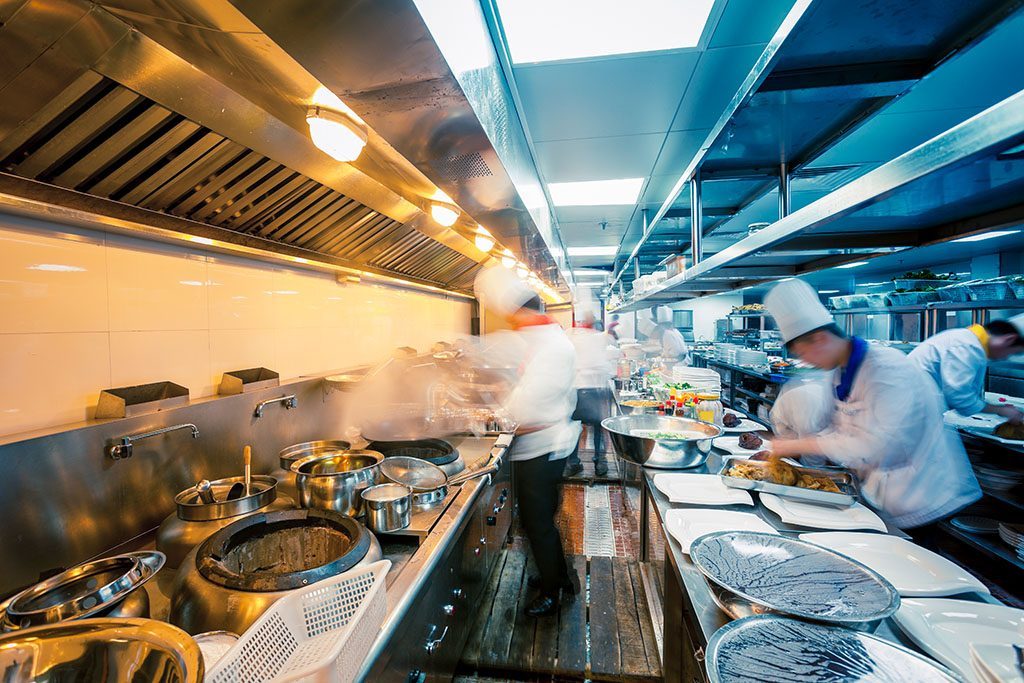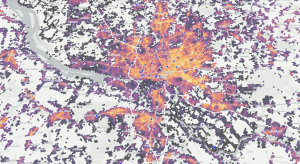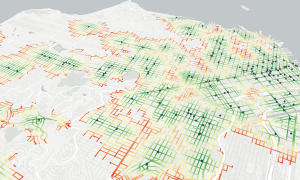

It’s 11 am and there’s another online meeting about to begin. The fridge is empty, and your significant other is also stuck in a remote call from homeoffice. So how do you get to lunch?
Ordering something quickly has become a viable option for many people today, no longer reserved for special occasions. The Covid 19 pandemic in particular has given the food delivery industry a significant boost, and business is booming. But deliveries are no longer just a “byproduct” of a resident restaurant. Rather, new business models are spreading that do not have restaurant spaces but are based on shared or so-called ghost kitchens and thus have different requirements for site selection and expansion.
We spoke with arguably one of the most exciting startups looking to revolutionize the market: Huuva wants to conquer the world from Helsinki. Its expansion manager Luukas Castrén tells us how.
Luukas, what exactly is Huuva’s business model?
Huuva offers a turn-key service for restaurants that want to expand and grow their business. We manage delivery and takeaway-only kitchens which are powered by our own proprietary software and technology. Our partner restaurants pay us a commission fee, already including delivery and rent costs.
This sounds like a shared kitchen?
Partly. In general, the restaurant brands get their own sub-kitchen inside the larger venue. What is being shared is the dispatching part. Huuva provides a shift manager who helps the restaurants in the packaging and dispatching the food to the delivery couriers. This operation is supported by our technology.
Compared to other ghost kitchen companies, what is different about Huuva?
We work to make the food delivery industry more enjoyable, convenient, and profitable for all parties involved: consumers, restaurants, and the delivery partners. For consumers, we bring top restaurants to their favorite food delivery platform. When ordering on a platform – whether it’s UberEats, FoodPanda, or whatever – they are able to combine menu items from different restaurants into a single delivery. You can think of this like having a food court in your pocket. Also, our customers can rely on hot meals and excellent quality, as the kitchens are optimized for delivery. From the restaurant perspective, our model is a low-risk and low-cost way to grow. Huuva doesn’t demand any multi-year rental agreements, we do not require any heavy upfront renovations or other investment cost, and we take care of regulations and bureaucracy that comes with setting up a new kitchen. With us, restaurants can start cooking and serving new neighborhoods in a matter of days. With respect to delivery companies, we are able to improve their KPIs and add quality restaurant offering to their platforms.
When you say that your kitchens are optimized for delivery, what does that mean precisely?
Optimization starts already with site selection. We choose locations that support high volume delivery operations, as they are frequently visited by couriers on bikes and scooters. We also plan a layout that minimizes the number of steps people have to make inside the kitchen. Besides the physical aspects of the kitchen, our software helps the different brands to schedule their cooking under one roof, so that multi-brand orders are getting done at the right time. This way, the cooks don’t have to do any tedious cross-organizing.
How are the restaurants reacting?
Restaurants faced enormous challenges during Covid-19 and the lockdowns. Additionally, we see that consumer demands and trends are changing quickly, especially among younger generations in large cities. Restaurant owners also see that change. As with startups, many restaurant brands don’t live more than 5 years, so you need to innovate constantly and ideally stand out from the crowd. We see that cloud kitchen approach can help the ambitious restaurant owner in tackling all of these challenges and support them with rapid concept development and testing alongside getting most value out of their existing brands.
As head of expansion at Huuva, how do you decide where to move your business next?
We have very ambitious growth plans over the upcoming years. Naturally, we started in our headquarter country Finland, but are already expanding abroad. We want to be present in the fast-paced markets with enough volume in the delivery business already today and an exciting, lively food and restaurant scene. One of the best parts of our job is to learn and immerse ourselves in neighborhoods, city and country-specific consumer trends and plan how Huuva would fit there.

Can you give an example of how these trends differ geographically?
It’s crucial for us to find out how common food delivery is in the specific markets. In the Nordics, a consumer orders a meal delivery twice per month on average. As a contrast, in Greece, the average number is 15. And in Central Europe it’s something in between. And the consumption profiles can differ quite a lot. For example, Indian is super popular in London and the whole UK, it is not as popular in all of the Central European countries. But there are also differences from city to city and even from neighborhood to neighborhood.
What is your strategy when entering new markets?
We have two approaches: The first one is bringing top quality restaurants to underserved neighborhoods. We believe that the trendiest and hottest restaurants shouldn’t be the privilege of city centers or certain hot spots, so we want to bring them to areas where we see customer demand which is not currently met with the existing restaurant supply. The second approach is to work in these city centers and hotspots by helping the restaurants there to separate their delivery business from their brick-and-mortar kitchen. When the dining hall is full, brick-and-mortar kitchens quickly reach their capacity limit, making them miss out on potential revenue.
How do you assess the potential of new sites?
We do our own scientific location analysis with Targomo’s platform TargomoLOOP. It provides us with all the relevant sociodemographic data that is key to understanding different possible delivery zones. Combined with its analytics functionalities, the tool allows us to explore geographic areas that are new to us and objectively compare locations. The second step is to then evaluate how the prospective venue supports our layout and operational requirements.
Where do you see the delivery market moving within the next few years?
McKinsey & Company released a topical and on-point analysis on the food delivery market in September 2021 which highlights the fact that the restaurant industry requires new business and operating models now and in the future. The cloud kitchen space has already seen different models, from virtual restaurant brands, optimizing the use of existing restaurant kitchen space to simple kitchen rental models. At Huuva, we see that you need to consider the challenges of all parties involved in the restaurant and food delivery industry to drive real, sustainable change and growth. Nothing else is certain than change and we are committed at Huuva to delight consumers daily and enable restaurants and food delivery companies to do sustainable business.
Thank you for the interview!
If you want to use TargomoLOOP to expans your location network or create delivery zones, learn more about the location intelligence platform or directly book your demo!








